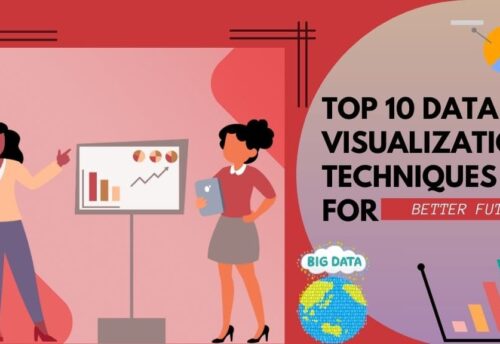
Top 10 Data Science Tools In 2023
Data Scientists Can Execute A Variety Of Data Science Jobs, Such As Data Analysis, Cleansing, Visualisation, Mining, Reporting, And Filtering, With The Aid Of Application Software Or Frameworks. Some Of These Uses Are Included With Each Of These Tools. You Will Receive Training In All The Most Recent Data Science Technologies If You Choose To Pursue A Data Science With Python Certification. Let’s Learn More About These Tools And How They Benefit Data Scientists And Other Professions.
1. MS Excel

It Is The Most Fundamental And Critical Instrument That Everyone Needs To Understand. Beginners May Easily Understand And Analyse Data With The Help Of This Tool. The Microsoft Office Package Includes MS Excel. Beginners And Even Seasoned Professionals Can Gain A Fundamental Understanding Of What The Data Wants To Express Before Entering High-End Analytics. It Can Help With Quick Data Interpretation, Includes A Variety Of Data Visualisation Components Like Charts And Graphs, And Has Built-In Formulas. Data In MS Excel Can Be Simply Represented Using Rows And Columns By Data Scientists. Non-Technical Users Can Also Understand This Representation.
2. Bigml
Bigml Is An Online Platform That Enables Data Science And Machine Learning Operations. It Is Cloud-Based. It Is Based On Events. This GUI-Based Application Lets Beginners Build Models With Little To No Prior Experience Thanks To Its Drag-And-Drop Features. Businesses And Experts Can Integrate Data Science And Machine Learning Initiatives Using Bigml For A Variety Of Internal Processes And Operations. Many Firms Use Bigml For Tasks Like Threat Analysis, Weather Forecasting, And Risk Assessment. Using REST Apis, It Develops User-Friendly Web Interfaces. Users Can Also Create Interactive Data Visualisations With It. It Also Contains A Variety Of Automated Techniques That Let Users Eliminate The Need For Human Data Processing.
3. Google Analytics:

An Enterprise Website’s Or App’s Performance Is Thoroughly Examined Using Google Analytics (GA), A Professional Data Science Tool And Technique, To Produce Data-Driven Insights. Specialists In Data Science Are Employed Across Numerous Industries. One Of Them Is Involved In Web Marketing. Google Analytics Is A Data Science Tool For Digital Marketing That Enables Website Administrators To Easily Access, Analyse, And Review Website Traffic, Statistics, Etc. It Can Help Businesses Better Understand How Customers Or Website Visitors Use The Platform. Because Of Its Smooth Integration With Other Google Products Like Search Console, Google Ads, And Data Studio, This Programme Is A Popular Choice For Anyone Using A Variety Of Google Products. Google Analytics Can Help Data Scientists And Marketing Executives Make Better Marketing Decisions. An Enterprise Website’s Or App’s Performance Is Thoroughly Examined Using Google Analytics (GA), A Professional Data Science Tool And Technique, To Produce Data-Driven Insights.
4 Apache Spark:
A Sophisticated Analytics Engine That Is Capable Of Batch And Stream Processing Is Found In The Well-Known Data Science Tool, Platform, And Library Known As Apache Spark. It Has Cluster Management And Real-Time Data Analysis Capabilities. It Is Significantly Quicker Than Other Analytic Workload Technologies Like Hadoop. Along With Data Analysis, It Can Help With Machine Learning Tasks. Data Scientists And Machine Learning Engineers Can Create Predictive Models With Its Support For A Variety Of Integrated Machine Learning Apis. Programmers Working In Python, Java, R, And Scala Can Leverage A Number Of Apis Provided By Apache Spark In Addition To All Of Them.
5 Matlab:
Matlab Is A Closed-Source, Highly Effective Numerical, Computational, Simulation-Making, And Multi-Paradigm Data Science Programme For Processing Mathematics And Data-Driven Operations. This Application Allows Researchers And Data Scientists To Perform Matrix Operations, Assess The Effectiveness Of Algorithms, And Create Statistical Models Of Data. This Tool Integrates Computation, Visualisation, Statistical Analysis, And Programming Inside A User-Friendly Ecosystem. Matlab Is A Tool That Data Scientists Use For A Number Of Tasks, Such As Processing Images And Signals, Simulating Neural Networks, And Testing Different Data Science Models.
6 SAS:
The SAS Institute Developed The Well-Known Data Science Platform SAS For Complex Analysis, Multivariate Analysis, Business Intelligence (BI), Data Management Operations, And Predictive Analytics For Future Insights. A Wide Range Of Data Science Functionalities Are Supported By The Graphical User Interface, SAS Programming Language, And Base SAS Of This Closed-Source Software. Many Mncs And Fortune 500 Companies Use This Programme For Statistical Modelling And Data Analysis. This Tool Makes It Simple To Access Data From Database Files, Web Databases, SAS Tables, And Microsoft Excel Tables. It Is Also Used To Alter Current Data Sets To Produce Data-Driven Insights By Leveraging Its Statistical Libraries And Capabilities.
7. KNIME:
KNIME Is Another Well-Liked Open-Source, Cost-Free Data Science Tool That Supports Data Reporting, Analysis, And Mining. With The Help Of This Application, Data Scientists Can Quickly Extract And Manipulate Data. Its Modular Data Pipelining Architecture Makes It Possible To Integrate Various Data Analysis And Data-Related Components For ML And Data Mining Objectives. Thanks To The Exceptional Graphical Interface It Provides, Data Science Specialists May More Simply Create The Workflow Between The Numerous Preconfigured Nodes Available In Its Repository. Because Of This, Data Science Experts Just Require A Fundamental Understanding Of Programming To Perform Operations And Analyses Using Data. It Has Visual Data Pipelines That Offer Interactive Graphic Rendering For The Specified Dataset.
8. Apache Flink:
Another Apache Data Science Tool That Aids In Real-Time Data Analysis Is Flink. One Of The Most Well-Known Open-Source Batch-Processing Frameworks And Tools For Data Science, It Makes Use Of Its Distributed Stream Processing Engine To Carry Out A Variety Of Data Science Activities. Data Scientists And Other Professionals Frequently Need To Execute Real-Time Analysis And Computation On Data, Including Information About User Web Activity, Measurements From Internet Of Things (Iot) Devices, Feeds For Location Tracking, Information About Financial Transactions From Apps Or Services, Etc.
9. Python:
By Far, Python Is The Most Widely Used Programming Language For Data Analysis. Data Scientists May Perform Data Analysis On Sizable Datasets And Data Of Many Forms (Structured, Semi-Structured, And Unstructured) With The Help Of Python, Which Is Also Recognised As A Data Science Tool. This High-Level, General-Purpose, Dynamic, Interpreted Programming Language Can Help With Data Analysis, Data Cleaning, Data Visualisation, Etc. Thanks To A Built-In Data Structure And A Substantial Number Of Libraries. The Syntax Is Straightforward, And Learning It Is Simple. It Also Reduces The Expense Of Carrying Out Data Science Efforts.
10. R Programming
R Is A Strong Programming Language That Competes With Python For Data Analysis. For Statistical Computing And Data Analysis, Firms And Professionals Regularly Use It. It Has A Wonderful User Interface That Spontaneously Refreshes For A Better Programming And Data Analysis Experience. Because Of The Exceptional Team Contributions And Community Support, It Is A Crucial Tool For Data Science. Because Of Its Large Library And Collection Of Data Science Tools, Such As Tidyr, Dplyr, Readr, Sparkr, Data. Table, Ggplot2, Etc., It Is Scalable. R Uses Strong Machine Learning Techniques In A Simple And Efficient Manner, In Addition To Statistical And Data Science Processes. This Open-Source Programming Language Offers 7,800 Packages And Object-Oriented Features. The Entire Language Is Run On RStudio.



